How to Evaluate Art: A layman’s guide to understanding personal aesthetics
Isn’t all art just subjective and personal taste? As an artist I hear this all the time. I do believe in personal preference but I also believe there is an objective reality that transcends taste. Through imagery and text I will take you on a journey to separate the objective from the subjective and give you a chance to better understand what you like and why.
Take the following two portraits. Which do you think is a better piece of art? Why? Do you think this is just a matter of personal opinion?
Most people only see subject matter when they look at images. However, both of these images are portraits. Would it be safe to assume that 99.999% of the population would prefer the portrait by Vermeer on the left? So what is that preference based upon? Is that not a sign of objective criteria?
Now take these two images. Which do you think is a better piece of art? Why? What do you prefer ?
You may prefer the flat outlines of the Hokusai on the right or the heavy impasto of Van Gogh’s Starry Night. Both pieces are clearly master pieces, but lets talk a little bit about why.
I believe there is objective and subjective criteria for evaluating art. Subjective or personal preference can be the product of our environment. For instance, Southern Renaissance painting looks very light with bright colors and open compositions. Northern European Renaissance painting on the other hand is heavy and dark with cramped compositions. One doesn’t have to look much further than the weather in those areas to see the connection between the art and the environments from which they were created. Of course the weather is only one factor. There are countless others that cause one person to prefer certain color combinations and compositional devices over others.
Northern Renaissance Southern Renaissance
So here are a few questions to consider to help you to determine your own subjective preferences and their origins
1. Are there certain colors that you prefer over others? I suggest opening your closet and looking at your clothes. Check out all those places in the world where you have chosen specific colors or combination of colors (background color on your CPU, wall color, car color, art you love etc.)
2. What kind of shapes do you enjoy? Sleek and Curvy or Boxy (Porsche versus BMW)? Paisleys or Stripes? Victorian or Arts and Crafts?
Okay, now what is the objective or universal criteria for evaluating art? I have found that the criteria for measuring intelligence is a great tool for determining the value of art.
Memory, Reason, & Imagination are used as criteria for evaluating intelligence but also work well for judging art.
Memory
Personal experiences
Human experiences (history…specifically art history in this instance)
Knowledge
Thoughts
Ideas
Reason
Technique (manipulation of art materials)
Design and Composition
(the manipulation of the elements of design: line, space, shape, texture, color)
Imagination
Creativity
Innovation
(This applies to both the use of Memory and Reason)
See example below:


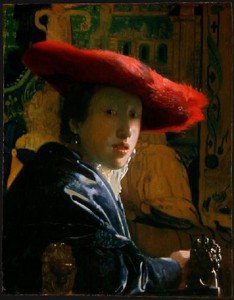



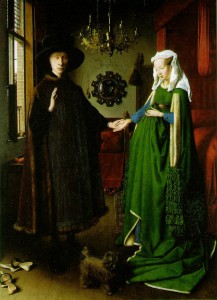
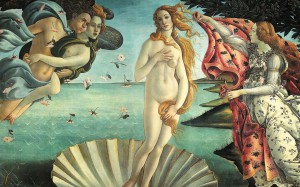
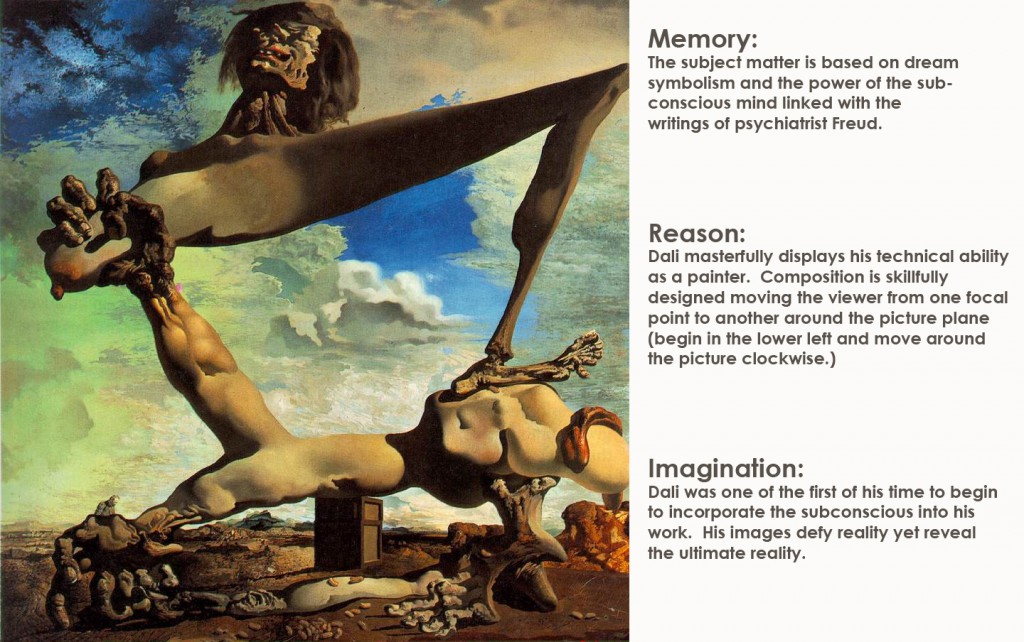

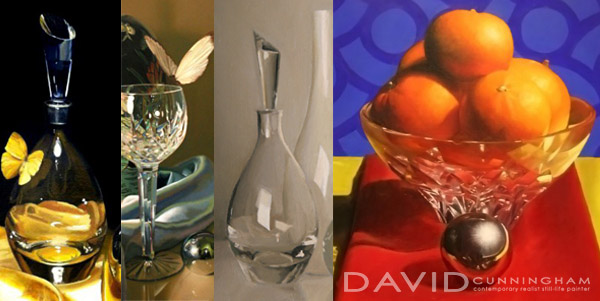

2 Comments
Nice introductory technical primer.
Well done, David. What about the inner knowing or seeing involved in assessing a painting as good? I can appreciate well-done art and absolutely hate it. I can look at a piece that appears to be intricate or “fine” but absolutely believe that it is mediocre. I have love paintings that appear to be truly basic, yet my soul tells me they are perfect.
My children have created art that far outshines what mainstream buyers think is good. Yet, if an adult were to create the same piece, I would question the talent.
Thank you, again, for making me think.
All best,
Ann
P.S. I loathe the painting by Dali because it disturbs my mind. But it is perfect.